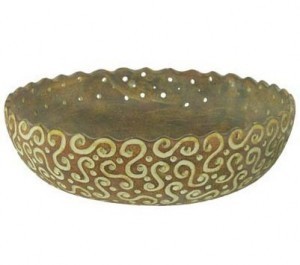Dimension of a Vault
The vault is an arched form intended to provide the space under it  with a roof. The vault can be built above or underground. The term bank vault is applied to the structure used to store valuables in homes and banks.
with a roof. The vault can be built above or underground. The term bank vault is applied to the structure used to store valuables in homes and banks.
Vault Dimensions
Through the ages, vaults of all sizes have been constructed. The ruins of a barrel vault in Egypt in Thebes have a span of 12 ft (3.6 m). The vault at Ctesiphon has a span of 83 ft (25 m). At the top it was 5 ft (1.5 m) thick.
The vault over the cloaca maxima in Rome was 800 ft long and had a 10 ft span. The biggest vault in the ancient world was the Eyvan-e Khosro in Iraq. The arch was 50 meters long, 26 meters across and 37 meters high.
Types
There are many kinds, which help explain the different vault dimensions that have emerged. Vaults types include the dome, barrel vault, the groin vault fan and rib vaults. The various eras have produced different vault types so there are Romanesque, Gothic, Byzantine and modern vaults.
The Barrel Vault
This is the simplest vault type. It is shaped like a tunnel sliced lengthwise in half. The oldest known examples were built by the Sumerians. These were constructed from bricks and clay mortar.
The earliest vaults in Egypt were those built by Ramses II in Thebes. Archeological evidence show the Assyrians also constructed vaults. The research shows that the Assyrians used different vault dimensions as did the Sumerians.
The Groin Vault
A groin vault is one wherein two semicircular barrels of similar diameters cross each other. Strictly speaking, it is only their intersection that is called the groin. An example of the groin vault is the Piscina Mirabilis built in Rome. The vaults were lifted by 48 piers. The aisles were 13 ft wide. The one at Caracalla had an 80 ft span.
Rib Vaults and Fan Vaults
The rib vaults emerged during the medieval age. In the rib vault, the diagonal ribs were made first and set up as fixed centers. The semicircular arch was used for the ribs. The fan vault is believed to have come out from the centering of the rib curves.
One of the earliest examples of the fan vault is the Gloucester Cathedral clusters. Here the fans join up at the top. Another example is King's College Chapel at Cambridge.
Byzantine Vaults
One of the finest examples is the vault of the Basilica of Maxentius. The domes in Byzantine were constructed from brick. Although they were light, it also made them somewhat vulnerable to pressure and force.
Modern Vaults
The 20th century has seen the emergence of thinner vaults with varied shapes. This has become possible due to advances in construction, mathematical knowledge and technology. Most of the vaults today are also very durable. Continuous research is also leading to the use of other materials for vault building.
Continued advances in technology and architectural design will lead to even more varied vault dimensions and shapes. Greater insight into hyperbolic paraboloids is also spurring development and variation.





